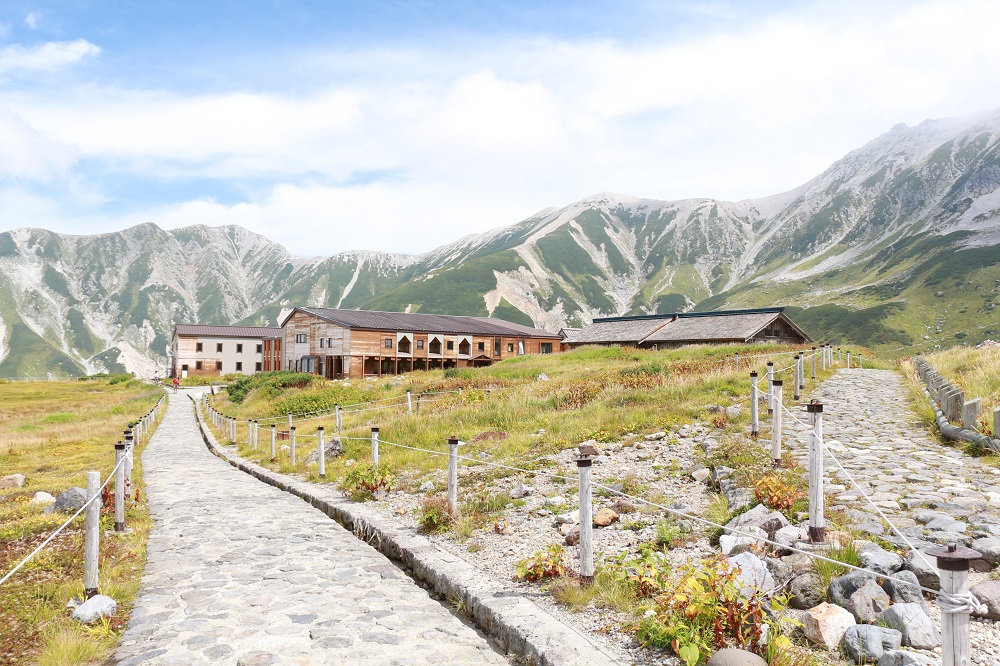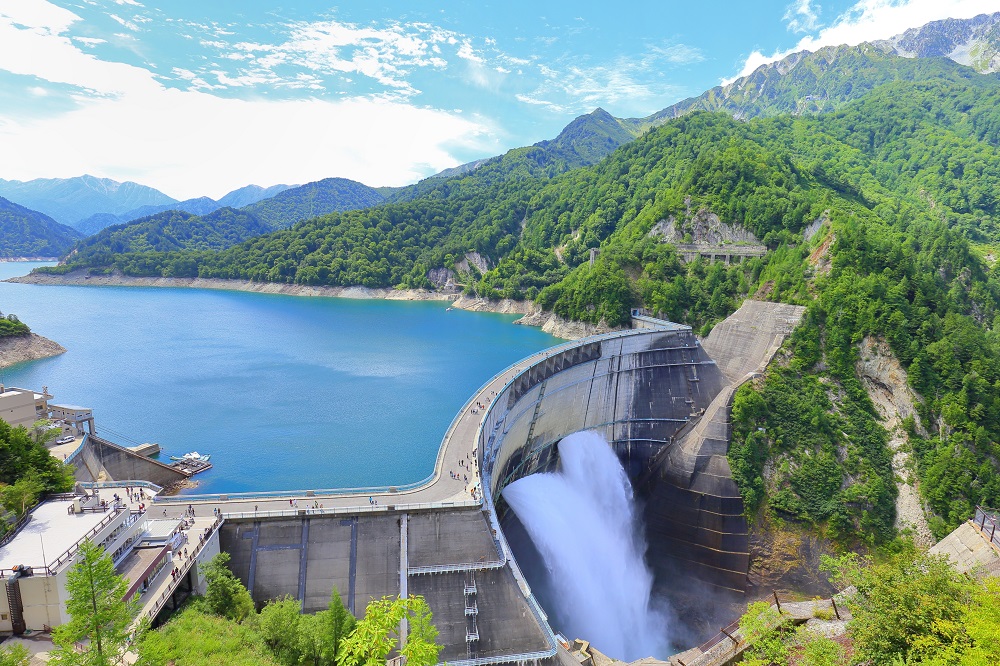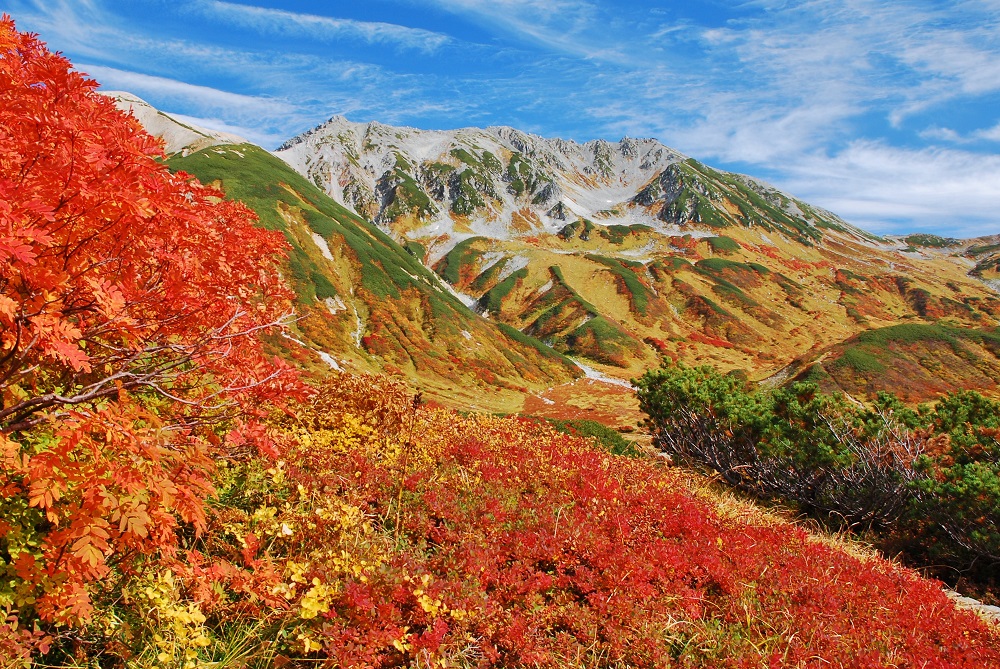The Tateyama Kurobe Alpine Route / 立山黒部アルペンルート (Toyama)
About The Tateyama Kurobe Alpine Route
The "Tateyama Kurobe Alpine Route" is one of the most famous mountain tourism routes in the world, stretching 37.2 Km through the 3,000-meter-high peaks of the Northern Japan Alps, connecting Toyama and Nagano Prefectures. Enjoy the natural splendor of the Northern Japan Alps with riding cable cars, buses, and ropeways. The several "Top of Japan" spots on the Tateyama Kurobe Alpine Route are the tallest dam Kurobe Dam, the oldest mountain hut “Tateyama Murodo”, and the highest station in Japan “Murodo”.

There are two ways to traverse the Tateyama Kurobe Alpine Route, one starting from Tateyama Station in Toyama Prefecture heading to Ogizawa Station in Nagano Prefecture, and the opposite route starting in Ogizawa Station and heading to Tateyama Station. To easily get to the highest point on the Alpine Route, Murodo, a start from Tateyama Station is recommended. If starting the route from Ogizawa Station, a transfer from an electric bus to a cable car, to a ropeway and a trolley bus is needed, but if starting the route from Tateyama Station, taking a cable car and bus will simply take you to Murodo. Murodo has many attractions, starting with the oldest mountain hut in Japan "Tateyama Murodo", a designated National Important Cultural Property, and Mikuriga-ike, the most beautiful volcanic lake in the Northern Japan Alps, along with variety of restaurants and other facilities.

Every year from April to June, "Yuki no Otani" [Snow Corridor], a huge 20-meter-high-class wall of snow created by clearing the snow around Murodo Station is formed. Take a stroll for 500 meters through the Snow Corridor Walk of "Yuki no Otani" for a rare experience. The spectacular view of the "Yuki no Otani", only seen in spring, attracts visitors from all over the world. When the weather is fine, the juxtaposition of the white snow against the blue sky is a breathtaking sight, a perfect spot for taking pictures.

In addition to Murodo, Tateyama Kurobe Alpine Route has many magnificent sights. "Shomyo Falls", the highest waterfall in Japan has a spectacular sight of water cascading down from a 350-meter drop. In the fall, as the surrounding trees change colors, enjoy a stunning view of the waterfall framed by the autumn leaves. In addition, Alpine plants bloom beautifully in Midagahara, an Internationally Valuable Wetland registered under the Ramsar Convention. The collection of 3,000 small ponds and pools scattered throughout the area, known as "Gaki-no-Tambo" [rice fields of the brats], is a quaint sight to behold. The famous "Kurobe Dam", the highest dam in Japan, abounds in attractive spots where the explosive flow of water during the summer season is captured.
Getting there and around
For Tateyama Station
by Train
From JR Tokyo Station: Take the JR Hokuriku Shinkansen (Bullet Train) to JR Toyama Station (Approx. 2hrs 10min)
From JR Nagoya Station: Take the JR Limited Express "HIDA" to JR Toyama Station (Approx. 4hrs).
From JR Osaka Station: Take the JR Limited Express "Thunderbird" to JR Tsuruga Station (Approx. 1hr 30min), transfer to JR Hokuriku Shinkansen (Bullet Train) to JR Toyama Station (Approx. 1hr 30min).
From JR Toyama Station: Transfer to TOYAMA CHIHOU RAILWAY and disembark at Tateyama Station (Approx. 1hr).
For Ogizawa Station
by Train
From JR Tokyo Station: Take the JR Hokuriku Shinkansen (Bullet Train) to JR Nagano Station (Approx. 1hr 30min), Transfer to JR Limited Express SHINANO to JR Matsumoto Station (Approx. 1hr), Transfer to JR Oito Line and disembark at Shinano Omachi Station (Approx. 1hr).
From JR Shin-Osaka Station: Take the JR Tokaido Shinkansen (Bullet Train) to JR Nagoya Station (Approx. 50min), transfer to JR Limited Express SHINANO to JR Matsumoto Station (Approx. 2hrs), Transfer to JR Oito Line and disembark at Shinano Omachi Station (Approx. 1hr).
From JR Nagoya Station: Take the JR Limited Express SHINANO to JR Matsumoto Station (Approx. 2hrs), Transfer to JR Oito Line and disembark at Shinano Omachi Station (Approx. 1hr).
by Bus
From Shinano Omachi Station: Take the local bus bound for Ogizawa to Ogizawa (Approx. 40 mins)
Recommendations
Kurobe Dam / 黒部ダム
In 7 years of labor by 10 million workers, the Kurobe Dam was completed in 1963, and the dam is now the largest arch-style dam in Japan. The story of the construction has been handed over to the generations as the "enterprise of the century". Enjoy the magnificent sight of the intense discharge from the 186meter-high dam and the clouds of spray produced. Along with the sheer presence as an architectural structure, enjoy the history and stories of Kurobe Dam, and experience the wonder of the largest dam in Japan beautifully set naturally. There is a great chance to see the rainbow, if visited in the morning.

Autumn Leaves
The Tateyama Kurobe Alpine Route has a difference of 1,975 meters between the highest and the lowest points along the route, so, the autumn leaves are enjoyed for a long period of time from mid-September to early November. Around Murodo, the highest point on the route, the trees begin to change colors around mid-September, and around the Tateyama Station, the lowest point on the route, the leaves begin to change colors in late October. Enjoy the autumn leaves at different times in the season at various locations.

Shomyo Falls / 称名滝
Shomyo Falls, listed as one of the "100 Best Waterfalls in Japan" and designated as the National Scenic Beauty and Natural Monument, is truly an eye-catching sight. During the season when the snow melts or after the heavy rain, a waterfall "Hannoki [Japanese alder, a type of birch] Falls" emerges next to the Shomyo Falls, and the third waterfall "Somen [Japanese thin wheat noodles] Falls" appear when conditions are right. Seeing "Shomyo Falls" along with both the "Hannoki Falls" and the "Somen Falls" would be a lucky chance.

Bijodaira / 美女平
The towering trees and ancient beech forests in Bijodaira, is a great place to be immersed in nature. The area is set up with three trekking courses, and the short course viewing ancient cedar trees in about one hour of trekking is recommended for the novices. The area is home to a variety of wild birds and is filled with the sounds of birds chirping in spring.

Travel Recommendations
The Tateyama Kurobe Alpine Route was awarded three stars in the Michelin Green Guide. Walking between the walls of snow at the Snow Corridor between April and June, the autumn leaves seen from the longest ropeway in Japan, and the Shomyo Falls seen from the windows of the Tateyama Kogen Bus with a brief stop at the viewing point are just a few of the experiences while crossing the route. The Alpine Route passage has luggage transportation service (with charge), so touring through the route will come true without encumbrance.
